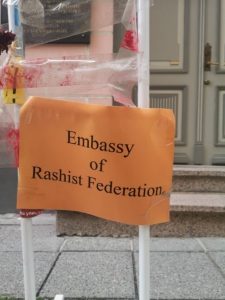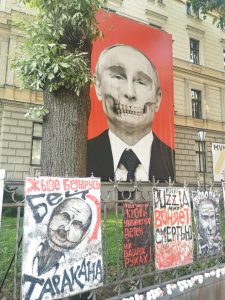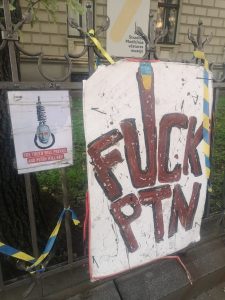by Vidmantė Krušinskaitė, Vilnius University
After gaining independence in the mid-90s, the Baltic states had no time to waste. Therefore, their acceptance into the European Union and NATO not even a decade later did not come as a surprise. Leaving behind half a century of oppression by the USSR, Lithuania, Latvia, and Estonia are some of the best examples of successful and swift integration into the Western world as we know it. However, Russia, the former USSR, did not leave peacefully. During the years of independence, the region constantly faced cyber, online, and societal interventions from the terrorist state, which inflicted mistrust in local governments and brought up the need to strengthen civil resilience. Fighting Russian misinformation by banning Russian and Belarusian TV channels in Lithuania, as well as partially in Latvia and Estonia, creating strategies and campaigns regarding stopping online misinformation spread like ‘Re:Baltica’ in Latvia, and others worked for a while. However, it all reached a breaking point when Russia started an unprecedented war against Ukraine.
In times of crisis, such as the war in Ukraine, different states might have different approaches to situations, similar to human psychology.
In times of crisis, such as the war in Ukraine, different states might have different approaches to situations, similar to human psychology. The fight, flight, or freeze response to stress is a psychological theory proposed in the mid-XX century that describes how the body automatically prepares itself to fight, flee, or freeze in the face of perceived threats or danger. Even though the level and nature of support varies among countries, with some providing military aid and others providing economic, diplomatic, or humanitarian assistance, the Baltic states have been providing help in all possible ways. In times of political unwillingness and hesitation to do what is right, this puts the Baltics in a compromising situation in which they have decided to do what they did to break away from the perpetrator three decades ago – fight.
One of the most prominent and internationally acknowledged spokespeople regarding the danger of Russia and support of Ukraine is Lithuania’s foreign minister Gabrielius Landsbergis. The Lithuanian foreign minister has been very open about the potential dangers of Russia on his Twitter and international media outlets, stating that “peace can only be sustainable if Putin is defeated.” Estonia’s Defense Minister Hanno Pevkur has a similar message for Russia, as he recently declared during a press briefing, “Don’t play with us.” Meanwhile, Latvia’s situation is more complicated due to the largest Russian-speaking population in the Baltic states. Latvia has been supporting Ukraine and implementing various cultural reforms that are part of a wider de-Russification effort, aimed at ensuring, maintaining, and developing the Latvian language as the official state language and the common language in society.
The resistance by Lithuania, Latvia, and Estonia against Russia is a reminder that if facing a crisis, fighting, instead of fleeing or freezing, is the default way for the region.
The fear of “being the Russia’s next target,” while scaring some, has become a new motivation for the Baltic states to fight for the independence of Ukraine and to establish their identity as members of the free world. The resistance by Lithuania, Latvia, and Estonia against Russia is a reminder that if facing a crisis, fighting, instead of fleeing or freezing, is the default way for the region.
- This blog is a part of a blog series written by the BAMSE Riga intensive course students. The blog series analyses the concept of resilience from five different viewpoints: democracy in crises, regional responses, social consequences, relevance of history politics and cultural approaches. This blog belongs to the regional responses part of the blog series. Read more about the blog series on Bamse News & Events website.






